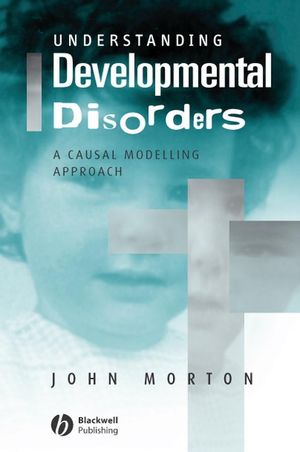Understanding Developmental Disorders: A Causal Modelling ApproachISBN: 978-0-631-18757-8
Hardcover
320 pages
January 2005, Wiley-Blackwell
 This is a Print-on-Demand title. It will be printed specifically to fill your order. Please allow an additional 10-15 days delivery time. The book is not returnable.
Other Available Formats: Paperback
|
||||||
Preface and Acknowledgements viii
Chapter 1 Introducing Cause 1
Cause and public issues 1
Cause and individual events: ‘Why did Romeo die?’ 6
Some more reasons for not looking at individual cases 9
The need for a framework for thinking in 10
Creating a tool: the problem of notation 14
An example of the limits of language 15
An invitation to consider diagrams as a tool 18
A tool for representing causal relationships 18
Chapter 2 Introducing Cognition 20
One thing I do want you to believe 20
Reductionism 22
Can we rely on behaviour? 24
The IQ example: a note of caution 27
Why cause needs cognition 29
Chapter 3 Representing Causal Relationships: Technical and Formal Considerations 34
Categorizing facts 34
The causal notation 38
Starting a causal model for autism 41
Complications 46
Some easy stuff on cause and correlation 51
Other notations 54
Chapter 4 Autism: How Causal Modelling Started 67
The biological origin of autism 74
The role of cognition in defining autism 81
What is mentalizing? 86
The non-social features of autism: how to diagram ideas on weak central coherence in autism 89
Summary 92
Chapter 5 The What and the How 98
Ground rules of causal modelling 99
Chapter 6 Competing Causal Accounts of Autism 106
Representing the effects of environmental factors 107
Cognitive theories of autism 112
Chapter 7 The Problem of Diagnosis 133
Diagnosis and cause: relying on behaviour 134
The Spanish Inquisition example: the dangers of labelling 135
Problems of diagnostic practice 140
Variability 148
Changes over time: improvement and deterioration 152
The variability of the phenotype 153
On co-morbidity and the question of residual normality 158
To summarize 160
Chapter 8 A Causal Analysis of Dyslexia 161
The dyslexia debate: Is there such a thing as dyslexia? 161
The discrepancy definition of specific reading disability 164
Towards a cognitive definition 166
An X-type causal model of dyslexia 168
Competing theories of dyslexia 176
Non-biological causes 195
Other biological causes of reading failure 199
How do we sort among the options? 200
The relationship between acquired and developmental dyslexia 204
A theoretical update 204
Chapter 9 The Hyperkinetic Confusions 208
Drugs as diagnostic refinement 212
Types of theory 216
The problem of co-morbidity: conduct disorder and ADHD 218
The cognitive level 219
Sonuga-Barke’s dual pathway model 223
Summary 226
Chapter 10 Theories of Conduct Disorder 227
The violence inhibition mechanism (VIM) model 228
The social information processing model for aggressive children 231
The coercive parenting model of Patterson 235
The theory of life-course persistent antisocial behaviour 236
What does the application of the framework tell us about the theories? 244
Chapter 11 Tying in Biology 247
Relations between the cognitive and biological levels 247
Equivalence: brain to cognition 251
Causal influences from cognition to brain 253
Genes and cause: the end of behaviour genetics 255
Endophenotypes 264
Mouse (and other) models for human disorders 266
Chapter 12 To Conclude 270
References 273
Name Index 292
Subject Index 296



